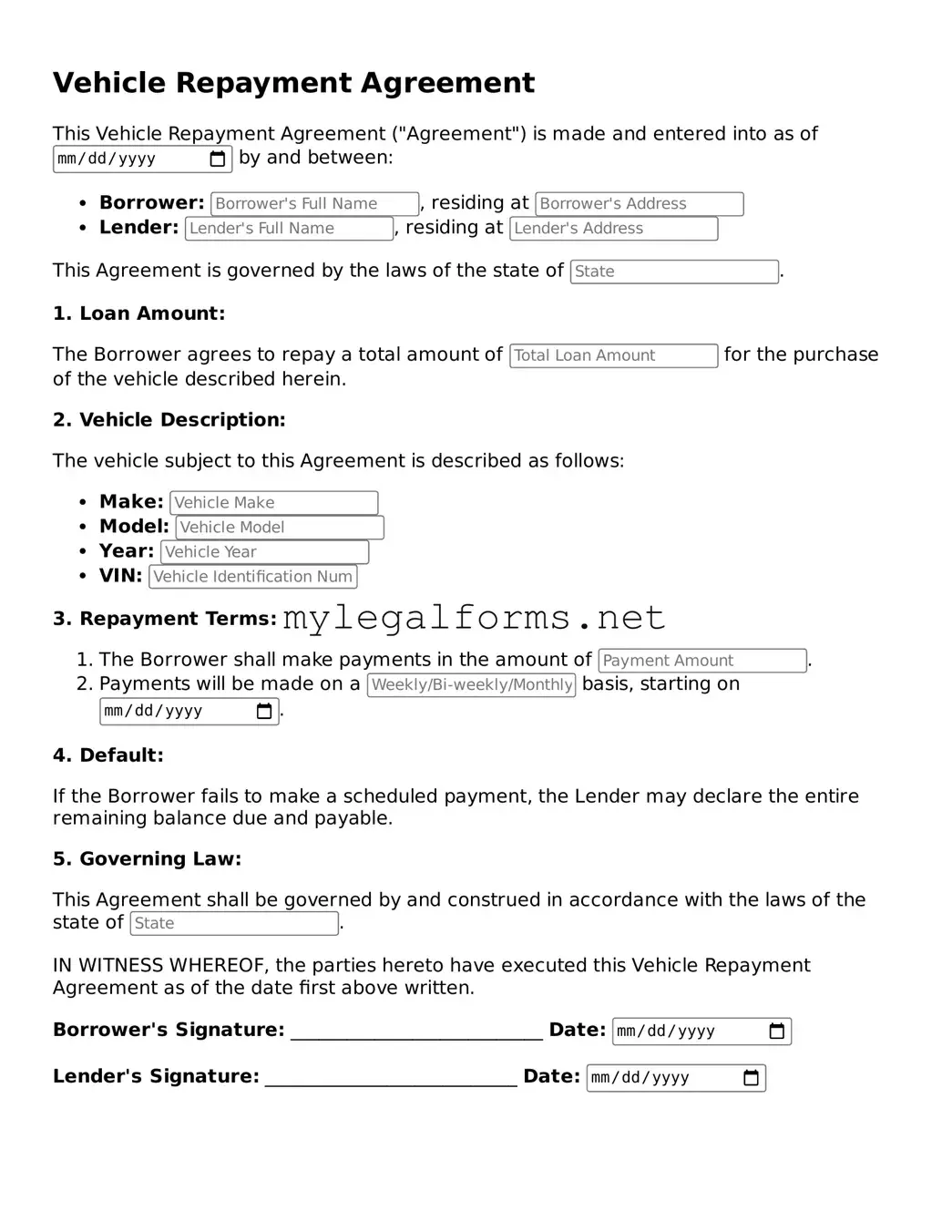Attorney-Approved Vehicle Repayment Agreement Form
The Vehicle Repayment Agreement form is a legal document that outlines the terms under which a borrower agrees to repay a loan taken out for the purchase of a vehicle. This agreement details the payment schedule, interest rates, and consequences of defaulting on the loan. Understanding this form is crucial for both lenders and borrowers to ensure a clear and fair repayment process.
Launch Vehicle Repayment Agreement Editor
